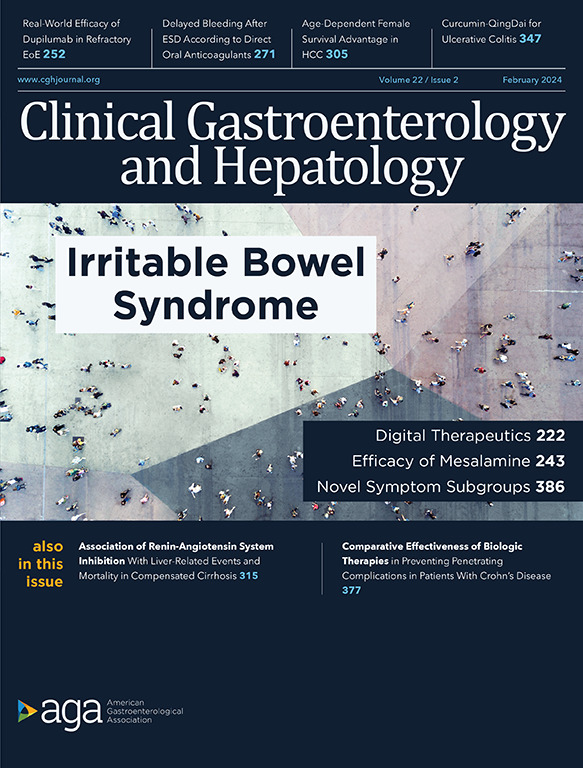缓解胃灼热是胃食管反流病药物开发的主要未满足需求:阈值分析。
IF 11.6
1区 医学
Q1 GASTROENTEROLOGY & HEPATOLOGY
引用次数: 0
摘要
背景和目的:烧心症状是胃食管反流病(GERD)患者就医的主要原因。尽管有临床指导,但治疗往往受到保险限制。作为一种新型疗法,几种钾竞争性胃酸阻滞剂(PCAB)正在开发中。我们进行了经济分析,以使胃食管反流病药物的开发符合以价值为基础的环境中胃肠病学家、保险公司和患者的需求:我们建立了一个决策分析模型,对每天服用 20 毫克的 vonoprazan(钾竞争性酸阻滞剂[PCAB]的一个例子)、普通非处方或处方质子泵抑制剂 (PPI) 方案以及在一年时间内不进行治疗进行了比较。临床反应的评估依据是最近一项三期多中心试验中无胃灼热天数的比例。与健康对照组相比,因持续反流症状而使用医疗服务的情况来自全国性观察研究。报告了成本和质量调整生命年[QALY]:结果:在没有适当治疗保险的情况下,胃食管反流症状未得到充分治疗的患者每年平均花费 4,443 美元,保险公司每年平均花费 3,784 美元。据我们的模型估计,如果 PCABs 能够在未来对胃灼热缓解和侵蚀性食管炎愈合情况进行评估的试验中向监管机构证明与 PPIs 相似的疗效,那么患者和保险公司每年至少可节省 3000 美元的费用,可产生 QALY 增益(+0.06/年),并且作为一种承保选择,其价格最高可达 8.57 美元/片,可为保险公司节省费用。阈值价格反映的是扣除所有药房福利经理回扣和折扣后的定价:我们的研究表明,将胃食管反流相关药物的开发目标定位在缓解胃灼热上似乎至关重要,这样可以使企业和保险公司的成本效益激励措施与患者和胃肠病学家的成本效益激励措施保持一致。本文章由计算机程序翻译,如有差异,请以英文原文为准。

Heartburn Relief Is the Major Unmet Need for Drug Development in Gastroesophageal Reflux Disease: Threshold Value Analysis
Background and Aims
Heartburn symptoms contribute to healthcare-seeking among patients with gastroesophageal reflux disease (GERD). Despite clinical guidance, management is often dictated by insurance restrictions. Several potassium-competitive acid blockers (PCABs) are under development as a new class of therapy. We performed economic analyses to align GERD drug development with the needs of gastroenterologists, insurers and patients in a value-based environment.
Methods
A decision-analytic model was constructed to compare vonoprazan 20 mg daily (an example of a PCAB), common over-the-counter or prescription proton pump inhibitor regimens, and no treatment over a 1-year time horizon. Clinical responses were evaluated based on the proportions of heartburn-free days in a recent phase 3 multicenter trial. Healthcare utilization for persistent reflux symptoms was derived from national observational studies compared with healthy control subjects. Costs and quality-adjusted life years were reported.
Results
Without insurance coverage for appropriate therapy, patients spend $4443 and insurers spend $3784 on average per year for inadequately treated GERD symptoms. Our model estimates that PCABs could save at least $3000 in annual costs to patients and insurers, could generate quality-adjusted life year gains (+0.06 per year), and could be cost-saving to insurers as a covered option at a price up to $8.57 per pill, if these drugs are able to demonstrate similar effectiveness to proton pump inhibitors in future trials evaluating heartburn relief and erosive esophagitis healing to regulators. Threshold prices reflect pricing after all pharmacy benefits manager rebates and discounts.
Discussion
We demonstrate that aiming GERD-related drug development toward heartburn relief appears critical to align cost-effective incentives for industry and insurers with those of patients and gastroenterologists.
求助全文
通过发布文献求助,成功后即可免费获取论文全文。
去求助
来源期刊
CiteScore
16.90
自引率
4.80%
发文量
903
审稿时长
22 days
期刊介绍:
Clinical Gastroenterology and Hepatology (CGH) is dedicated to offering readers a comprehensive exploration of themes in clinical gastroenterology and hepatology. Encompassing diagnostic, endoscopic, interventional, and therapeutic advances, the journal covers areas such as cancer, inflammatory diseases, functional gastrointestinal disorders, nutrition, absorption, and secretion.
As a peer-reviewed publication, CGH features original articles and scholarly reviews, ensuring immediate relevance to the practice of gastroenterology and hepatology. Beyond peer-reviewed content, the journal includes invited key reviews and articles on endoscopy/practice-based technology, health-care policy, and practice management. Multimedia elements, including images, video abstracts, and podcasts, enhance the reader's experience. CGH remains actively engaged with its audience through updates and commentary shared via platforms such as Facebook and Twitter.

 求助内容:
求助内容: 应助结果提醒方式:
应助结果提醒方式:


